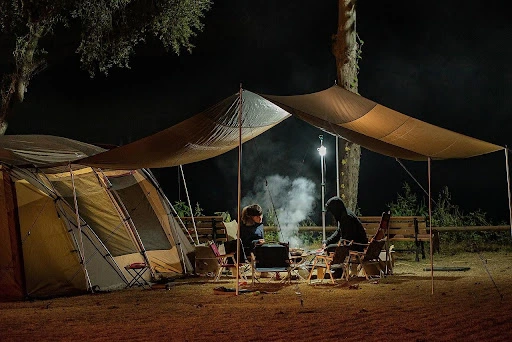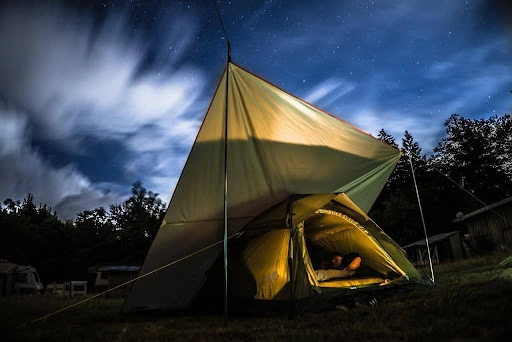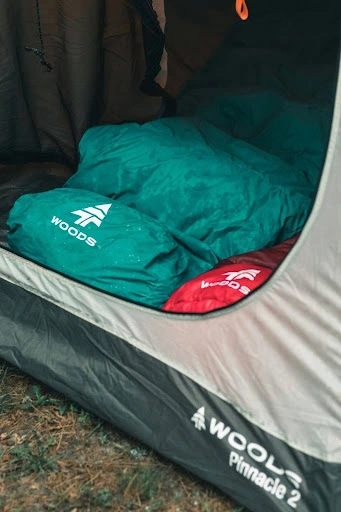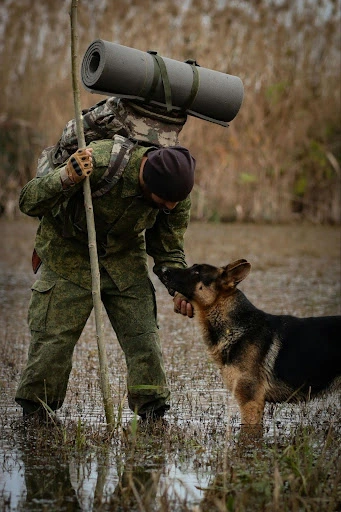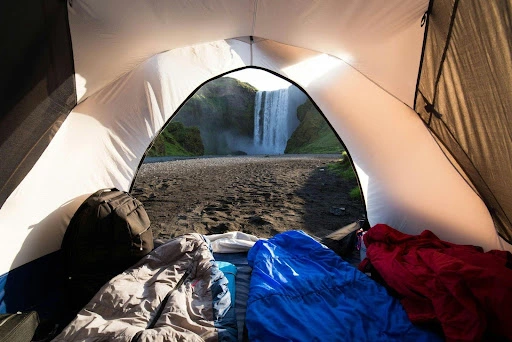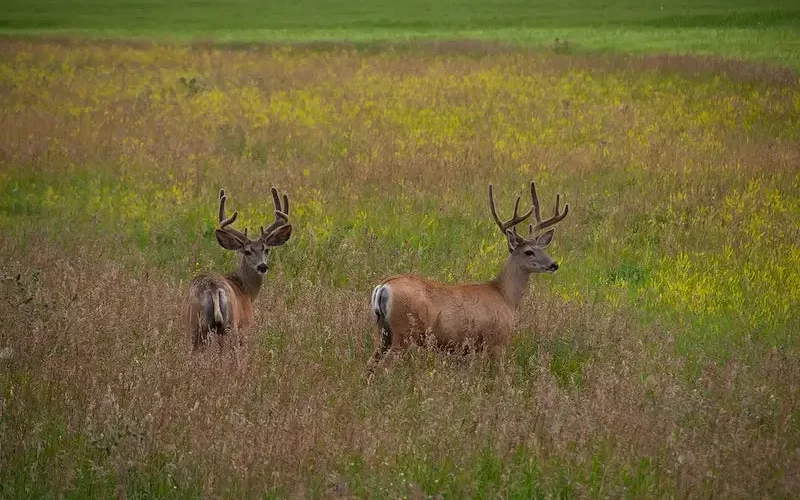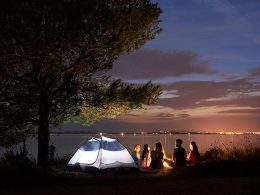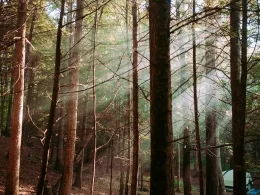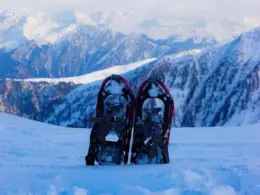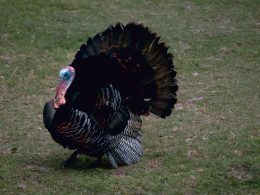If you’re anything like me, you’ve been soaking up the sun all summer with camping trips that leave you feeling recharged and ready to take on the world. But as the leaves start to turn and the air gets that crisp edge, it’s time to think about transitioning your gear for fall camping.
It isn’t as simple as tossing in a jacket or two—it’s about changing your gear in preparation for the cooler, sometimes unpredictable, weather that autumn brings.
In this article, I aim to give you some advice on what gear you can keep from the summer and what needs to be swapped out for something more robust.
Table of Contents
Why Should You Change Gear for Fall Camping?
While summer is quite consistent in both temperature and humidity, fall tends to start like summer and end up more like winter. This means that the gear you need will either have to be swapped out again at the end of fall or be adaptable to the variations in climate.
For fall, the key thing to remember is that the nights and mornings will be cool or cold, while the afternoons will remain warm. Expect more rain than usual, as the transitional seasons tend to bring a lot of precipitation. You also want to prepare for the weather to turn on a dime; what is sunny one minute may be heavy thunderheads the next.
Clothing: Layering Up for Cooler Nights
Let’s start with the basics—your clothing. Remember those breezy shorts and lightweight tees? Unfortunately, they’ll probably need to take a backseat, especially during the mornings and evenings.
Fall camping demands layers. It’s important to keep the layers thin so your body heat can easily warm the clothing. It is easier for your body to keep multiple thin layers warm than it is to have one or two bulky layers.
You’ll find that as you sit in the cool temperatures, you will start to get colder and colder with a thick layer on. It’s because your body can’t generate enough heat to keep that air space warm.
Here is an effective layering method you can use:
- Start with moisture-wicking base layers to keep sweat at bay. Sweat and cooler temperatures can lead to shivering. Merino wool is popular, but synthetic materials also work well.
- Add on a cozy fleece or even a down vest for insulation. In most dry conditions, that might be suitable for most of the season.
- Don’t forget a waterproof outer shell for those surprise drizzles. This layer also does well to keep the heat inside you during windy days as well.
As you can probably tell, it’s all about versatility. Layering allows you to adjust to fluctuating temperatures, meaning you can add thin layers and take them off accordingly.
Shelter: When Summer Tents Just Don’t Cut It
Your shelter is your sanctuary in the wild, and it needs to be up to the challenge of fall weather. Swap out your summer tent (you know, the one that is 90% mesh) for one that’s weather-resistant with a sturdy rain fly. Trust me, autumn showers can sneak up on you faster than a squirrel darting up a tree.
Speaking of, invest in a cot for the Fall/Winter/Spring months as you’d be surprised at how often you will wake up to a flooded tent floor from the rain; especially if you’re using your tent frequently. A cot will keep you off the ground and avoid the pressure of your body weight pushing rain through the bottom of it.
If you’re using a hammock then you’ll need to start looking into an underquilt or compatible sleeping pad as the cool wind underneath will start to sap your body heat. Otherwise, aside from widowmakers during storms, you have a little less to worry about than the tent-users.
Don’t forget the tarp—having a tarp up during the day (and night) provides a common space for folks to gather. You’ll also probably need one if you’re hammock camping as they generally don’t come with a rainfly. During heavy storms, I will even pitch a tarp over my tent to protect it from precipitation.
Sleep Gear: Insulating Pads and Sleeping Bags
Ah, sleep—the most important part of any camping trip. But in fall, the ground gets cold fast. It’s time to swap out your lightweight sleeping bag for something with a bit more insulation.
Look for bags rated for lower temperatures. And don’t skimp on your sleeping pad! An insulated pad can make all the difference between a shivering night and a cozy slumber. These gear swaps ensure you wake up refreshed and ready to tackle whatever nature throws your way.
Fall Camping Sleeping Pads
When it comes to sleeping pads, understanding the R-value is crucial. The R-value measures the pad’s thermal resistance, or how well it insulates you from the cold ground.
For fall camping, aim for a pad with an R-value of at least 3 to 4. This level of insulation will help keep the chill at bay, ensuring you stay warm throughout the night. Higher R-values are even better for colder conditions, so consider your specific needs and preferences.
You can use a closed-cell foam pad but some people find those uncomfortable, depending on the terrain. A good combination is to use the foam pad underneath the inflatable sleeping mat for an extra layer of protection from the ground. This keeps the inflatable pad from getting wet, potentially causing mold if not dried properly.
Sleeping Bags for Fall Camping
To start, understanding the temperature ratings on sleeping bags can be a bit confusing, but it’s essential for staying warm and comfortable. If you’re asking if down or synthetic is the way to go, I have had successes and failures with both.
Down stuffing is great until it gets wet and then the warmth factor goes out the tent door. Synthetic stuffing can still keep you warm when wet but it weighs a ton usually. There are tradeoffs for both, I would say, stick within your budget and appropriate temperature ranges for your sleeping bag while fall camping.
Most sleeping bags come with three key ratings: comfort, limit, and survival.
- Comfort: This rating refers to the temperature at which a ‘cold’ sleeper would feel comfortable. If you’re someone who tends to get cold easily, pay close attention to this number.
- Limit: The limit rating is the temperature at which a ‘warm’ sleeper might start to feel cold. It’s the threshold where the average person can sleep without feeling too chilled.
- Survival: The survival rating is the absolute lowest temperature at which the bag will keep you alive. It’s not meant for comfort, but for extreme conditions where staying alive is the primary concern.
For fall camping, aim for a sleeping bag with a comfort rating that matches the expected nighttime temperatures. I would go a step further and get a sleeping bag meant for the next tier of colder temperatures. For example, if the temperatures are expected to get down to 32°F then aim for a 20°F bag instead.
Mummy bags are a popular choice for fall camping due to their excellent heat retention. Their snug fit minimizes the amount of air your body needs to warm up, keeping you toasty even in cooler conditions.
However, they can be restrictive, which some campers find uncomfortable. If you value freedom of movement, test a mummy bag before committing to it for your trip.
Other Fall Camping Blankets
Hammock users, don’t worry—I’ve got you covered too. A top quilt can be a great alternative to a traditional sleeping bag. Alternatively, you can open a mummy bag, flip it, and use it like a quilt by placing your feet in the foot box and draping the top half over your body.
Yes, the hood might be in your face, but it’s more comfortable than you might think. I’ve camped down to negative temperatures with a flipped mummy bag, and even my shoulders stayed warm.
For those who are particularly cold sleepers, consider adding a military surplus blanket either inside your sleeping bag or over the top. These blankets are known for their durability and warmth, even when wet. They can provide an extra layer of insulation that might make all the difference on a frosty fall night.
Some folks say you can use a combination of two wool blankets and sleep comfortably down to 32°F, but in my experience, I still get cold. A sleeping bag with a wool blanket works very well in my experience.
Final Thoughts
If you expect your fall gear loadout to be lightweight, you could be right—or not. It depends on what your preference is. For myself, I tend to pack heavier because I like to be comfortable outside. This means I’ll bring more than what I think I need just to be certain.
I have spent cold nights outside, and I have learned my lesson in that regard. Plus, if you’re camping with others, having extra just in case can save the day and keep the spirit of camping high. You’re out there to have fun, after all.


